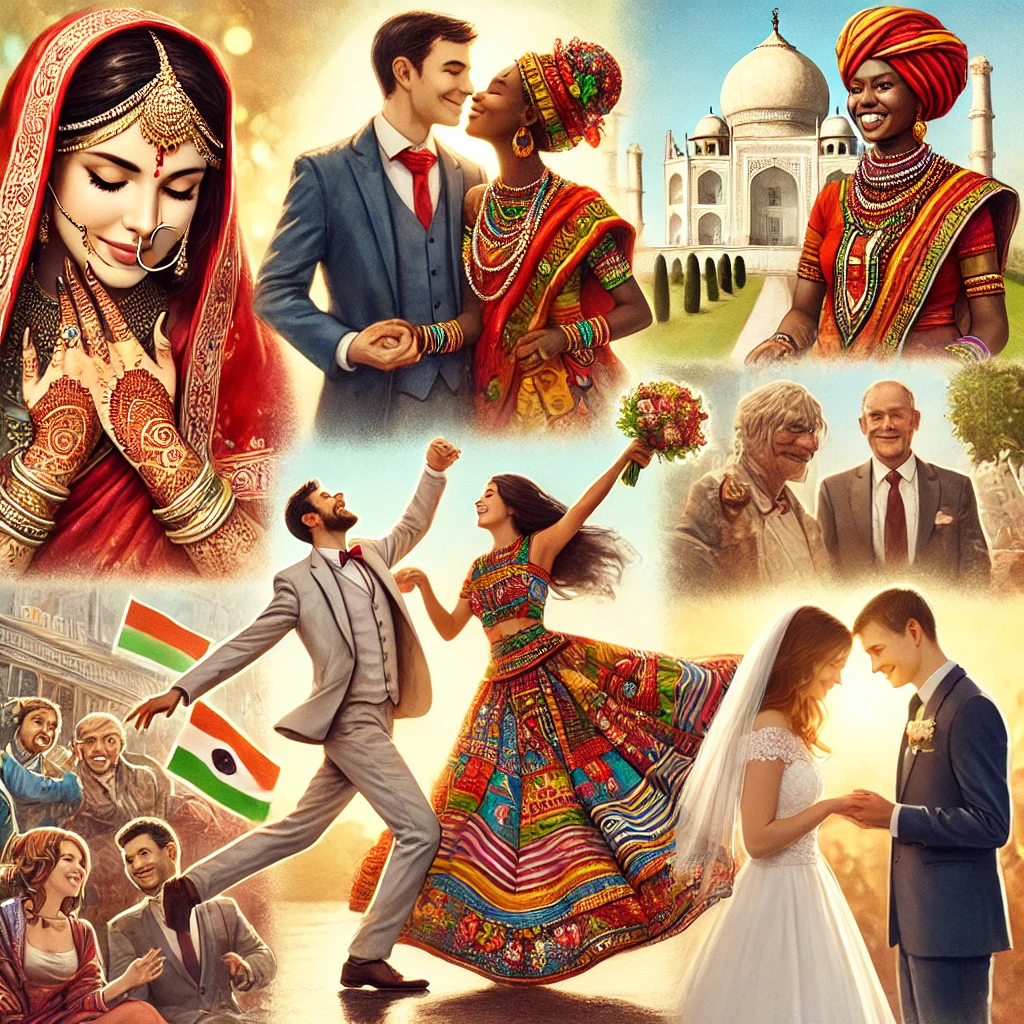
Weddings are a universal celebration of love and commitment, but the traditions and customs surrounding marriage vary greatly across cultures. From elaborate multi-day ceremonies in Asia to vibrant, music-filled celebrations in Africa, each region brings its unique flavor to the institution of marriage. This article explores how wedding traditions differ in Asia, Africa, Europe, and the United States, highlighting the cultural significance behind these customs.
Wedding Traditions in Asia
Asia is home to a diverse range of cultures, each with its own distinctive wedding customs. However, many Asian weddings share common elements such as family involvement, symbolic rituals, and traditional attire.
1. India: Grand Multi-Day Celebrations
Indian weddings are famous for their grandeur, often lasting multiple days. Key ceremonies include:
- Mehendi Ceremony – The bride’s hands and feet are adorned with intricate henna designs.
- Sangeet – A musical event where families come together to sing, dance, and celebrate.
- Baraat – The groom’s procession, often accompanied by a live band and dancing.
- Sindoor and Mangalsutra – The groom applies vermilion (sindoor) to the bride’s forehead and ties a sacred necklace (mangalsutra) around her neck to signify marriage.
2. China: Tea Ceremonies and Red Symbolism
Chinese weddings emphasize family unity and good fortune. Traditional elements include:
- Tea Ceremony – The bride and groom serve tea to their elders as a sign of respect.
- Red Attire – The color red, symbolizing luck and prosperity, dominates wedding dresses and decorations.
- Betrothal Gifts – The groom’s family presents gifts, often including money and jewelry, to the bride’s family.
3. Japan: Shinto Traditions
Japanese weddings often follow Shinto rituals, which include:
- San-san-kudo – A sake-sharing ceremony where the couple takes three sips from three cups to symbolize their union.
- Kimono and White Hood (Wataboshi) – Brides traditionally wear a white kimono and a hood, signifying purity and submission.
Wedding Traditions in Africa
African weddings are rich in cultural heritage, with strong emphasis on community, music, and symbolic traditions.
1. Nigeria: Yoruba and Igbo Wedding Traditions
- Introduction and Bride Price – The groom’s family formally seeks the bride’s hand in marriage and offers gifts or a bride price.
- Aso Ebi – Guests wear coordinated outfits to signify unity.
- Dancing and Money Spraying – Guests throw money at the couple as a blessing for prosperity.
2. Kenya: Maasai Wedding Traditions
- Blessing with Milk and Spitting – Elders bless the couple by spitting on their heads.
- Cowhide and Beaded Jewelry – Brides wear elaborate beaded jewelry and a cowhide skirt.
3. South Africa: Lobola (Bride Price) Negotiations
- Lobola – The groom’s family negotiates a bride price, often paid in cattle or money.
- Zulu Reed Dance – A cultural event where young women showcase their beauty before marriage.
Wedding Traditions in Europe
European weddings blend modern elegance with deep-rooted traditions. Each country has its unique customs, often influenced by history and religion.
1. United Kingdom: The Royal Influence
- Something Old, New, Borrowed, and Blue – A superstition believed to bring good luck.
- Church Weddings – Many couples still prefer traditional church ceremonies.
- Confetti Throwing – Guests shower the couple with paper confetti or rice for prosperity.
2. Italy: Breaking Glass for Good Luck
- La Serenata – The groom sings a serenade outside the bride’s window.
- Breaking a Glass – The couple shatters a glass, and the number of pieces symbolizes years of happiness.
3. Greece: Crowning Ceremony
- Stefana (Wedding Crowns) – The couple wears crowns linked by a ribbon, symbolizing unity.
- Dancing the Kalamatianos – A traditional Greek wedding dance involving all guests.
Wedding Traditions in the United States
The U.S. is known for its mix of cultural traditions, influenced by immigrants from all over the world. However, several customs remain popular.
1. White Wedding Dress
- Inspired by Queen Victoria’s wedding in 1840, the white dress symbolizes purity and remains a standard in American weddings.
2. Exchanging Vows and Rings
- Couples often exchange personalized vows and wedding rings, signifying lifelong commitment.
3. First Dance and Bouquet Toss
- The first dance is a romantic moment where the couple dances to a special song.
- The bouquet toss is a fun tradition where the bride throws her bouquet, and the woman who catches it is said to be the next to marry.
Conclusion
Weddings around the world are as diverse as the cultures that celebrate them. Whether it’s the vibrant Indian ceremonies, the symbolic African rituals, the elegant European traditions, or the personalized American weddings, each region brings something special to the table. While customs differ, the essence of marriage—love, family, and commitment—remains universal.
Call to Action
Planning a wedding and want to incorporate cultural traditions? Share your favorite wedding customs in the comments below!



